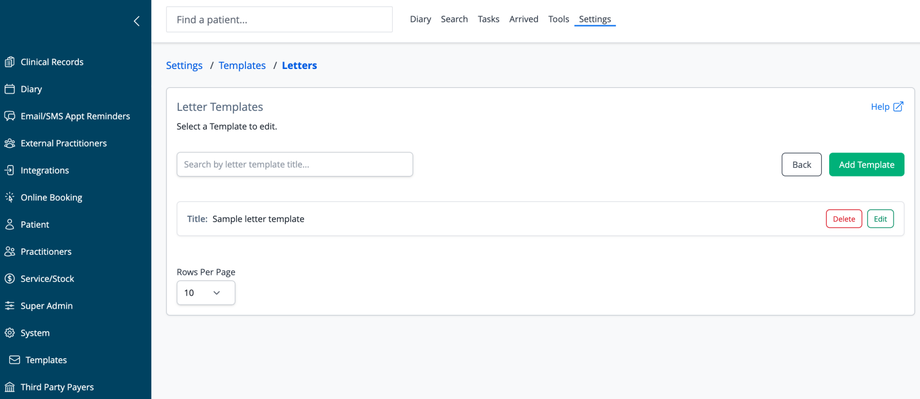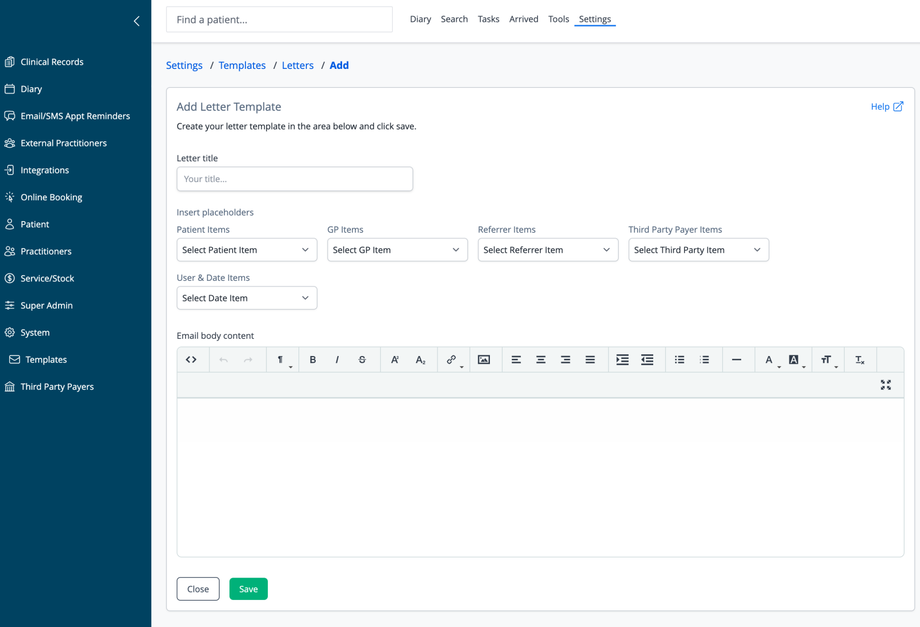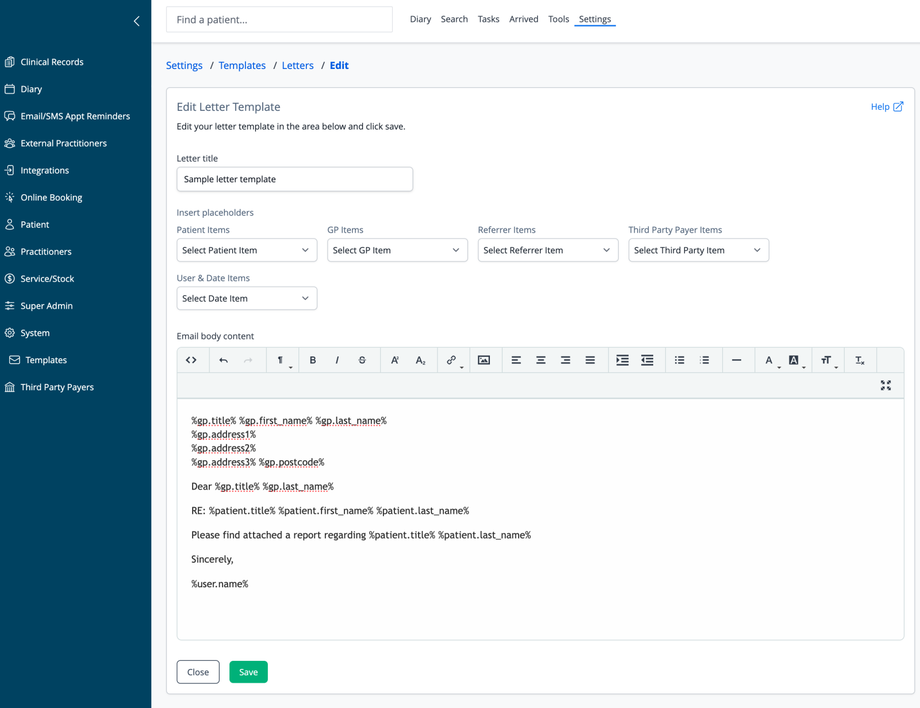Overview
The Letter Templates section allows practitioners to create, edit, and manage customized letter templates for professional communications. These templates streamline the process of creating referral letters, patient reports, and other formal correspondence with standardized formatting and personalized content.
Accessing Letter Templates
- Navigate to Settings in the top menu
- Select Templates from the sidebar menu
- Click on Letters
Letter Templates List
The main screen displays all available letter templates:
- Each template shows its title
- Templates are listed in alphabetical order by title
- Action buttons (Edit, Delete) appear to the right of each template
- Search functionality helps find specific templates
List Features
- Search: Filter templates by title using the search bar
- Add Template: Create a new letter template
- Back: Return to the previous screen
- Rows Per Page: Control how many templates display per page (default is 10)
Adding a New Template
To create a new template, click the "Add Template" button on the Letter Templates list page. The template editor includes:
Letter Title
- Enter a descriptive title that identifies the purpose of the letter
- Use clear, specific titles that indicate when the template should be used
Insert Placeholders
The system provides various placeholder categories that dynamically insert specific information:
- Patient Items: Name, date of birth, address, contact details, etc.
- GP Items: Referring doctor information and contact details
- Referrer Items: Referral details and dates
- Third Party Payer Items: Insurance or funding details
- User & Date Items: System user and timestamp information
Each category has a dropdown menu of available placeholders.
Letter Body Content
- Rich text editor with formatting options:
- Text formatting (bold, italic, underline)
- Font size and type controls
- Alignment and list options
- Link insertion
- Image embedding
Using Placeholders
Placeholders appear in the format %category.field_name% and are automatically replaced with actual data when letters are generated. Examples include:
%gp.title%- GP's title (Dr., Prof., etc.)%gp.first_name%- GP's first name%gp.last_name%- GP's last name%gp.address1%- First line of GP's address%patient.title%- Patient's title%patient.first_name%- Patient's first name%patient.last_name%- Patient's last name%user.name%- Name of the current user generating the letter
Note: If the patient preferred name placeholder is used in a template, and the patient does not have a preferred name saved, the system will automatically insert the first name instead.
Template Actions
- Save: Create the new template or update an existing one
- Close: Return to templates list without saving changes
Editing an Existing Template
To modify a template, click the "Edit" button next to its title. The editing form includes:
Letter Title
- Update the template title as needed
Letter Content
- Modify the body text with the rich text editor
- Add or remove placeholders as needed
- Format text for professional presentation
Common Template Uses
- Referral Letters: Communications to other healthcare providers
- Medical Reports: Formal documentation of patient conditions
- Insurance Correspondence: Letters to third-party payers
- Patient Information Letters: Formal communications to patients
- Sick Notes/Certificates: Documentation for employers or schools
Best Practices
- Create templates for frequently used letter types to save time
- Use a consistent, professional tone across all templates
- Include proper salutations and closings
- Always include your credentials and contact information
- Test templates with placeholder data before using with patients
- Organize templates with clear, descriptive titles
- Review templates periodically to ensure they meet current requirements
- Use placeholders consistently to maintain professional formatting
Navigation
- Close: Return to templates list without saving changes
- Save: Update and save template changes
- Help: Access additional information about letter templates



